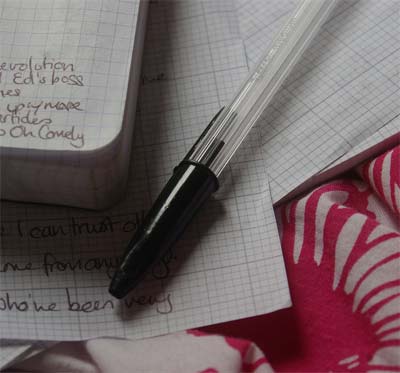Six Clever Tricks for a Better To-Do List
By Ali Luke
September 29, 2012 • Fact checked by Dumb Little Man

Have you ever written a to-do list, only to find that, at the end of the day, you hadn’t even managed one item on it?
When you fail to make headway with your to-do list, you might end up blaming yourself – but it’s probably not your fault.
To-do lists are great tools, but to be truly effective, you need to know a few tricks for making them work well.
Does your to-do list look like this?
- Taxes
- New desk?
- Bob and Jane
While you might know exactly what these mean in the context of your day, there’s also a good chance you’ve not really pinned down each task.
After all, you’re unlikely to sit down and get all your taxes completely done in one session – and when you see “taxes” on the list, your first response is probably to jump straight to the next item.
A really effective to-do list uses action items. That means starting each task with a verb, and being specific about what you’re going to do:
- Check tax deadline, and sort all receipts into date order.
- Look into the top three options for a new desk.
- Call Bob and Jane to confirm dinner this weekend.
#2: Break Big Projects into Smaller Tasks
Sometimes, a vague item is a big project that needs breaking into smaller tasks. “Write report” often isn’t something you can easily get your head around – but “get data for section 1 of report” is.
By breaking up any big projects into smaller tasks, you make your to-do list much more valuable. Once you actually get going on those tasks, you’ll already have done some of the high-level thinking – and you can check them off your list one by one, creating a (well-earned) sense of steady progress.
#3: Put Timings Against Each Task
Perhaps you write a to-do list every day, but you rarely get through more than a few items on it. Unless you have at least a rough idea of how long your different tasks will take, you won’t know how many you can accomplish in a day.
When you add an estimated time against each task, you get several great benefits:
- You can easily see if you’ve got a to-do list that’s going to take 16 hours instead of 8
- You can race against the clock, trying to beat your time estimate – making you more efficient
- As time goes by, you’ll get a clearer sense of how long different tasks take (and you might be surprised by what you find)
#4: Split Your List into Different Categories
It’s hard to work from a single, big, disorganized list. If “buy milk” is next to “phone client” and jumbled up with “go to the gym”, you may find yourself accidentally missing out some of your tasks.
If your list is a mess, it’s also far too easy to end up prioritizing the little tasks over big ones: you want to clear out as many to-dos as possible, regardless of how big or small they might be.
By splitting your list into different categories, it’s easy to group different tasks for different areas of your work or life. For instance, your categories could be:
- Major ongoing projects
- Small work-related tasks
- Personal development / education
- Personal chores
It’s up to you what categories you create, and you may want to experiment with using different ones, and with using more or fewer categories, over several weeks or months.
#5: Batch Together Similar Tasks
If you’ve got a bunch of similar tasks, try to do them in batches, rather than one at a time. For instance, if you need to make ten phone calls this week, it’ll be most efficient to do them all at once – say, on Tuesday morning – rather than doing two each day.
The same goes for lots of common tasks like:
- Reading and answering your emails
- Looking up specific facts / information for your report
- Finding great images to use for your presentation
Sometimes, this might mean reorganizing the way you complete a particular project. If you normally create each slide for your presentation separately, finishing Slide 1 before starting Slide 2, you might find that it’s more efficient to create draft text for all the slides, then find and add images.
#6: Prioritize Your To-Do List
Finally, a great way to get more from your to-do list – especially if you’re in a tight spot – is by prioritizing.
One powerful way to prioritize is by using your best time of the day for your highest-energy tasks. That way, you’ll get the important things done while your brain is in gear, and you can deal with chores or admin when you’re not feeling quite so energized. Your peak time might be morning, afternoon, or night.
Prioritizing is also really useful when emergencies crop up. If something derails your day, don’t panic – instead, grab your to-do list, and highlight the items that really, truly have to get done today. Next, use a different color to highlight those which it would be useful to get done today. Now you can work through the high-priority items first, knowing that the others can wait till tomorrow if necessary.
Do you have any great tips about to-do lists? Share your thoughts and ideas in the comments!
 |
Written on 9/29/2012 by Ali Luke. Ali is a writer of fiction and non-fiction and a writing coach. She blogs about writing on her site, Aliventures.com, and has a free ebook “How to Find Time For Your Writing” available when you join her writing newsletter here. | Photo Credit: Amelia |


